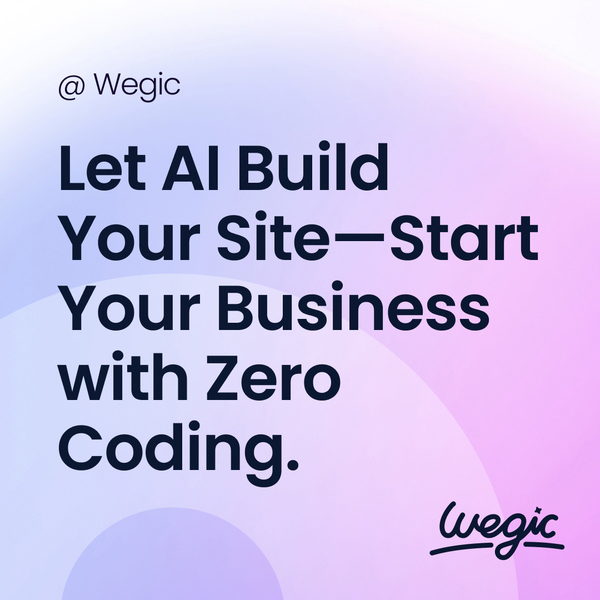Best Accessibility Testing Tools for Web Applications Best Practices
What Is Best Accessibility Testing Tools for Web Applications?
Best Accessibility Testing Tools for Web Applications
Cooking and baking are not only enjoyable activities, but they can also be a great way to express creativity and share delicious food with others. If you run a food blog or website, building recipes is a crucial part of your content creation. Whether you are a seasoned chef or a home cook, creating enticing and unique recipes can help you attract more visitors to your website and keep them coming back for more. Here are some tips on how to build recipes on your website that will impress your audience and keep them engaged.

Best Accessibility Testing Tools for Web Applications FAQ
Best Accessibility Testing Tools for Web Applications
One of the top AI website builders is Wix. Wix offers a user-friendly drag-and-drop interface that allows users to easily customize their website layout and design. The platform also features hundreds of templates and design elements to choose from, making it easy to create a unique and visually appealing website. Additionally, Wix’s AI technology, known as Wix ADI (Artificial Design Intelligence), can create a personalized website for users based on their preferences and needs. This makes the process of building a website quick and hassle-free.
Another popular AI website builder is Squarespace. Squarespace is known for its sleek and modern templates that are perfect for businesses looking to showcase their products or services. The platform offers a variety of customizable design options, including fonts, colors, and layouts, allowing users to create a website that reflects their brand identity. Squarespace also features a built-in AI tool called Squarespace LogoMaker, which can create a custom logo for businesses in minutes. With its intuitive design interface and AI-powered tools, Squarespace makes it easy for users to create a professional website with minimal effort.
Weebly is another top AI website builder that is perfect for users looking for simplicity and ease of use. Weebly’s drag-and-drop interface makes it easy to build a website from scratch, with no coding required. The platform offers a variety of templates and design elements to choose from, allowing users to create a unique and visually appealing website. Weebly’s AI technology can also suggest design elements and layouts based on the user’s preferences, making it even easier to create a personalized website. With its user-friendly interface and AI-powered features, Weebly is a great option for small businesses and entrepreneurs looking to establish an online presence.
For those looking for a more advanced AI website builder, Adobe Dreamweaver is a great option. Dreamweaver offers a wide range of design and customization options, allowing users to create a website that is completely tailored to their needs. The platform features a powerful AI tool called Adobe Sensei, which can generate code based on the user’s design preferences. This makes it easy for users to customize their website layout and design without having to write code. With its advanced AI technology and robust features, Adobe Dreamweaver is a top choice for users looking for a high-level website builder.
What is responsive web development?
Responsive web development is the practice of designing and building websites in a way that allows them to adjust and adapt to different screen sizes and devices. This means that a website will look and function properly on a desktop computer, a smartphone, a tablet, or any other device with a screen.
There are several key components of responsive web development that make it effective. These include:
1. Flexible grids: One of the main principles of responsive design is the use of flexible grids that can scale proportionally to fit different screen sizes. This allows for a website to maintain its layout and structure regardless of the device it is being viewed on.
2. Media queries: Media queries are CSS3 modules that allow developers to apply different styles based on the size of the screen. By using media queries, developers can create specific styles for different screen sizes, ensuring that a website looks and functions properly on all devices.
3. Fluid images: Another important aspect of responsive design is the use of fluid images, which can scale proportionally to fit different screen sizes. This prevents images from becoming distorted or cut off on smaller screens, ensuring a consistent user experience.
4. Mobile-first approach: With the increasing use of smartphones and tablets, it has become common practice to design websites with a mobile-first approach. This means that developers start by designing the mobile version of a website first, and then adapt it for larger screens. This approach ensures that a website is optimized for mobile devices, which are used by a majority of users.
Benefits of responsive web development
There are several key benefits of responsive web development, which make it essential for modern website design. These include:
1. Improved user experience: Responsive websites provide a seamless user experience across all devices, ensuring that users can easily navigate and interact with a website regardless of the device they are using. This leads to higher user satisfaction and increased engagement.
2. Higher conversion rates: With the increasing use of smartphones for online shopping and browsing, it is essential for e-commerce websites to be responsive. Responsive design ensures that users can easily make purchases and complete transactions on any device, leading to higher conversion rates and increased sales.
3. Better SEO performance: Search engines such as Google prioritize responsive websites in search results, as they provide a better user experience. Responsive design can improve a website’s SEO performance, leading to higher rankings and increased organic traffic.
4. Cost-effective: Responsive web development can be cost-effective in the long run, as it eliminates the need for separate mobile websites or apps. By designing a single responsive website, developers can ensure that the website looks and functions properly on all devices, reducing the need for additional resources and maintenance.
Challenges of responsive web development
While there are numerous benefits to responsive web development, there are also some challenges that developers may face. These include:
1. Compatibility issues: With the wide variety of devices and screen sizes available, developers may encounter compatibility issues when designing a responsive website. It is important to test a website on different devices and browsers to ensure that it looks and functions properly on all platforms.
2. Performance optimization: Responsive websites can be slower to load on mobile devices, especially if they contain high-resolution images or complex features. It is important for developers to optimize the performance of a website to ensure fast loading times and a seamless user experience.
3. Complexity of design: Designing a responsive website can be more complex than designing a traditional website, as developers need to consider how the layout will adapt to different screen sizes. It is important to create a flexible design that can scale proportionally and maintain a consistent user experience across all devices.

How to Best Accessibility Testing Tools for Web Applications
Best Accessibility Testing Tools for Web Applications
In conclusion, there are many great options available for building a website, ranging from beginner-friendly platforms like Wix and Weebly to more advanced options like WordPress and Squarespace. Depending on your needs and technical expertise, you can choose the platform that best suits your goals. Whether you’re looking to create a simple personal site, a professional portfolio, or a successful online store, there’s a website building platform out there for you. With the right tools and resources, you can build a stunning website that showcases your brand and helps you achieve your online goals.


